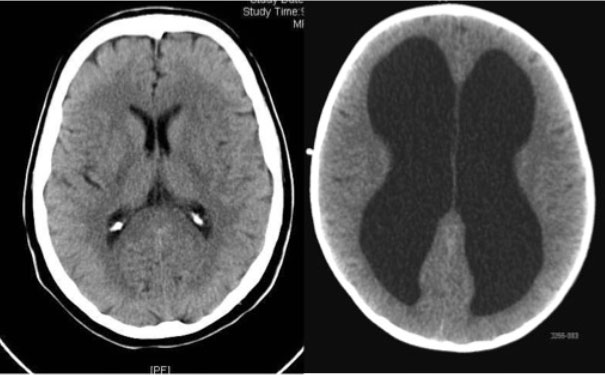Introduction
The so-called hydrocephalus ("water on the brain") is a disease that can practically occur at any age. A disturbance of cerebrospinal fluid circulation is caused, resulting in the widening of the inner brain called ventricles (see figure).

Left: CT image of the head of a healthy person. The brain chambers (black) are slimly configured. Right: CT image of a hydrocephalus patient. Here, the brain chambers are significantly widened. Compared to the left image, one can see that the actual brain tissue mass (gray) is diminished due to the massive brain chamber size.
Depending on the cause of the disease this ventricular enlargement is accompanied by a more or less pronounced increase in intracranial pressure and the destruction of brain tissue.
The clinical symptoms here may vary. Often the affected patients complain about headaches, dizziness, memory problems, incontinence, listlessness or unsafe walking.
Because these symptoms are very non-specific, prior to initiating therapy in most cases advanced diagnostics according to the newest guidelines must be conducted. Our clinic offers the full repertoire on the basis of guidelines. In addition to targeted clinical examinations and punctures of the dural sac in the lumbar spine canal for cerebrospinal fluid discharge (so-called lumbar puncture, short LP) also modern MRI techniques and minimally invasive measurement of intracranial pressure (so-called telemetric ICP monitoring) are performed.




